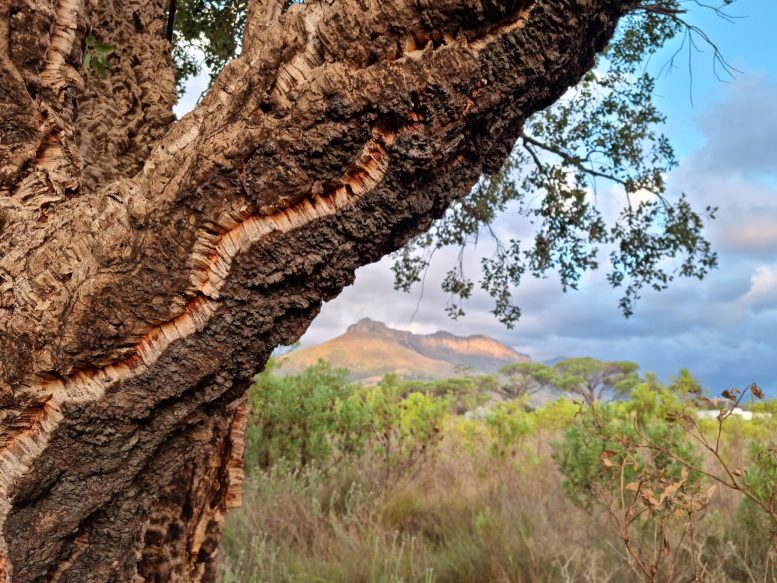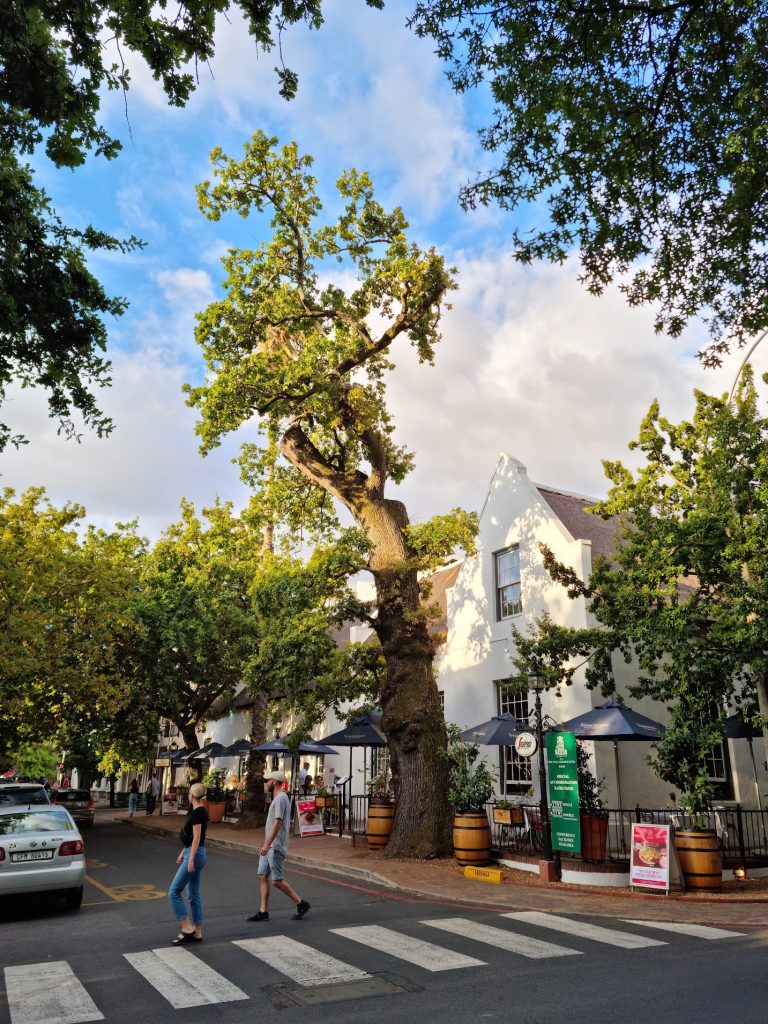
Quercus robur was first introduced into South Africa in 1656. Today it is one of the most widespread and recognized trees in the South African landscape, such as the centuries-old oak trees lining the streets of Stellenbosch (also known as Eikestad or Oak City). But these centuries-old trees are also the most susceptible to infections and pests such as the polyphagous shot hole borer. Credit: Christiaan Gildenhuys
The nearly 400-year-old history of oaks in South Africa may be coming to an end, forever changing the treescape of towns and cities such as Cape Town, George, Paarl, Stellenbosch, and Swellendam.
In a research paper published in the South African Journal of Botany, ecologists from the Centre for Invasion Biology (CIB) at Stellenbosch University’s School for Climate Studies, traced the history of the introduction of the genus Quercus into South Africa, as well as its current status and the factors that are changing its distribution across our landscapes.
Christiaan Gildenhuys, a postgraduate student in SU’s Department of Botany and Zoology and first author on the article, says the first written record of English oak (Quercus robur), dates to 1656, reportedly introduced under the authority of Jan van Riebeek himself: “Dozens of other oak species were introduced to the Cape of Good Hope by early Dutch settlers and the British colonial government. Many oaks were subsequently widely cultivated across the country and have since become one of the most widespread and recognized tree genera in South Africa today,” he explains.
But now the species may have arrived at a crossroads.
The Threat of Disease and Invasive Species
Gildenhuys found that three oak species – English oak, Pin oak, and Cork oak – have become invasive along riverbanks and the urban-wildland interface in Stellenbosch and Cape Town. These oaks do not cause major problems as invaders now but may do so in the future.
At the same time, many species (including the most widespread species, Q. robur or English oak) are highly susceptible to diseases and invasive beetles such as the polyphagous shot hole borer: “Not only does this mean that many century-old oaks are at risk, but it also means that infected trees must be removed before the infestation spreads further,” says Gildenhuys.

The oak-lined streets of historical towns such as Stellenbosch in South Africa (the second oldest town in South Africa after Cape Town) are set to change over the next decade. These centuries-old oak trees are particularly susceptible to the onslaught of the Polyphagous shot hole borer. Credit: Christiaan Gildenhuys
Prof. Dave Richardson, an ecologist at CIB and co-author, says the story of oaks in South Africa is a classic example of how global change is rapidly changing the roles and perspectives of species in urban areas.
“We must accept that the potential impact of the polyphagous shot hole borer is a game changer. As a result of this invasion, the treescapes of many towns in South Africa are going to change rather radically. Landowners and authorities who may decide to replace infected Q. robur trees with less susceptible tree species must also consider the potential negative impacts of these species,” he explains
The ideal would be to replace the infected trees with indigenous species which are less susceptible to pests and diseases such as the PSHB. However, people’s attachments to their oak-lined streets may inhibit replacement efforts and induce conflicts between management and stakeholders, he warns.
Prof. Guy Midgley, interim director of the School for Climate Studies, says trees make a vital contribution to lessening the impact of climate change by reducing heat stress in urban areas. On the other hand, the way thousands of diseased trees are disposed of may significantly impact carbon emissions.
Adding fuel to the fire is the debate about the cultural value of oaks in general. In one sector of South African society, these centuries-old trees are celebrated as part of our cultural heritage. In another sector, they are regarded as unwanted relics from a colonial past.
Reference: “The genus Quercus (Fagaceae) in South Africa: Introduction history, current status, and invasion ecology” by Christiaan P. Gildenhuys, Luke J. Potgieter and David M. Richardson, 17 February 2024, South African Journal of Botany.
DOI: 10.1016/j.sajb.2024.01.066
The study was funded by the Universiteit Stellenbosch and the Natural Sciences and Engineering Research Council of Canada.









Be the first to comment on "Forever Changing the Treescape of Cities – The 400-Year-Old History of Oaks May Be Coming to an End"